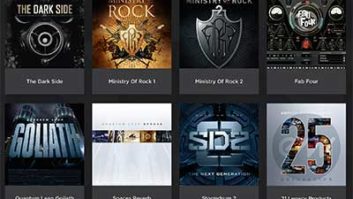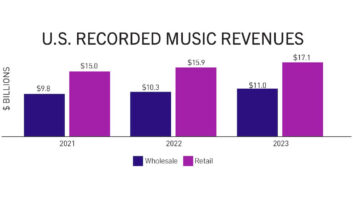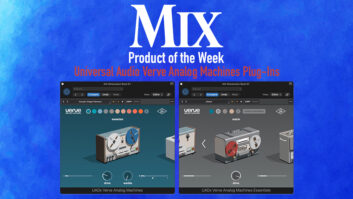It’s nothing new. You’re likely reading Mix because you have a subscription. It’s based on a mutual agreement. You pay up front and we provide monthly content we believe will engage you and keep you coming back year after year. Just recently, audio companies like Avid, Slate Digital, Cakewalk, and Audionamix have opted into software subscription models. Again, nothing brand new. Microsoft introduced the Office 365 platform in 2011 for business users, then rolled it out for consumers in 2013, and Adobe’s Creative Cloud bowed for their customers in 2014. These models shut the door on traditional ownership of applications for consumers and businesses alike. But with audio, it’s different, or is it?
Debate on the forums varies. Jstr on Gearslutz said: “There will be plenty of companies not doing subscription (sic). And then we will know who cares about their customers and who is gripped by greed and delusions.” And ANR2011, who answered, “This seems like a good idea for those who can’t afford to buy tons of plug-ins.” The focus early on seems to be about the financial stake, and rightfully so. It’s new. But there are also hidden benefits in the notion that you can now buy into software simply to collaborate with others on a project basis. Next month I’ll look at this from the user side.
For now, some are cautiously accepting the idea, while others on a tight budget don’t want another monthly bill. But maybe we just don’t get it?
First, the math: Let’s say Zorg.com promises monthly releases, updates or new plug-ins for $30 per month. Minor updates and bug fixes are a given nowadays, so that’s not incentive enough, but new plug-ins and features? It depends on the difference between the cash outlay and what you’d spend on the products. Also, you have to love everything the company makes and anticipate new releases, or you have to absolutely need the software to make a living (aka, a ubiquitous platform everyone uses). Then it either makes sense, or you’re stuck, depending on how you look at it.
With Slate Digital’s Mix/Master Bundle, the Website promises you’ll get everything Slate Digital makes, plus “tons of new plug-ins throughout the year for free as long as you subscribe” for $19.99 a month. You can start and stop the subscription at will, you keep what you’ve got, and you can restart any time without penalty. You also get a free iLok if you opt-in ($49.95), and as an incentive to stay with the program for a year, you’ll get a coupon for $200 to use in the Slate store. But if you’ve got it all, what’s left to buy? I guess you could opt out and use the $200 as a bonus to buy something outright and move on. By the way, you don’t have to use the Mix/Master Bundle model at all—it’s optional.
Avid launched Pro Tools 12 at NAMM in January along with its subscription model. The Website’s descriptions of the different options available for Pro Tools purchases leave room for confusion. There’s a monthly subscription with updates and support starting at $29.99/month, an annual upgrade plan with updates and support starting at $199, an annual subscription with a 12-month license with updates and support starting at $299, and perpetual licenses including 12 months of updates and support starting at $899. I asked Avid’s Segment Marketing Manager Andrew Wild to clarify. He said: “With Pro Tools 12, you can buy it outright as you always have, or subscribe. Subscription offers the lowest startup costs and is active only during the term of the contract. A perpetual license costs more up front, but is less expensive in the long run and provides a non-expiring license.” You can also buy a year’s worth of service and upgrades for $199 if you’re a current owner. This all means you can have it both ways: You can buy Pro Tools as you have in the past, or a version with a “use by” date. This is great to know, but I had no chance of understanding this from the Website.
Michael Hoover, president of the Cakewalk division of Gibson brands, explained its model. Rather than compiling new features on a shelf in anticipation of a yearly major release, they looked at a membership model as a way to get new features out as they’re developed. It’s a shorter, repeating learning curve for the customer that they see as a winner. Hoover: “Customers who purchase [SONAR] up front have a perpetual license, and 12 months of access to bug fixes, tech support, feature updates and exclusive content. Those who pay monthly have 12 months’ access to the software, free updates, features and content. After making 12 consecutive payments, they keep what they’ve received. At the end of 12 months, both prepaid and monthly customers can choose to renew at a discounted rate.” The catch, if any, is if you’re monthly and choose to opt out prior to the initial 12 months, the software then reverts to demo mode (no save, no export) and you lose updates, features and new content.
With other options available, companies should be wary. It’s a game of promises, promises on one side and wait-and-see on the other. In a largely tough financial climate for music creators, ultimately it’s the wallet that decides whether subscriptions are a go, or a no.







